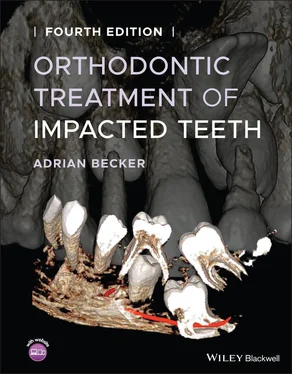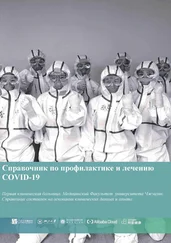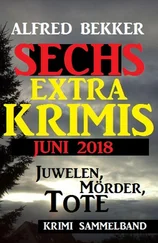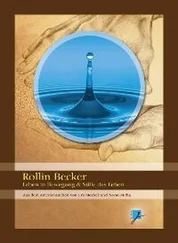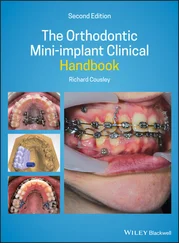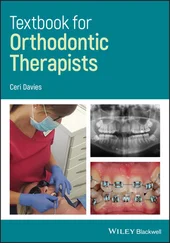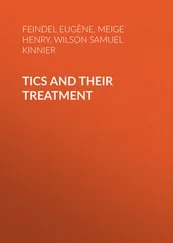By way of illustration, at a dental age of 6 years the length of the roots of the mandibular central incisors and the first permanent molars will be seen to be one‐half to two‐thirds developed. Confirmation of this will come from a comparison, which may be made with the development stage reached by the other teeth, where one would anticipate that unerupted maxillary central incisors will have reached one‐half root length, mandibular canines one‐third root length, first premolars one‐quarter root length, and so on.
As already noted, however, variations do occur, particularly with maxillary lateral incisors, mandibular second premolars or third molars. This may lead to certain apparent contradictions. It is therefore recommended to exclude consideration of these teeth when making the relevant assessments and thereby not only simplifying the process, but also contributing to the accuracy of the resulting assessment.
In addition, as stated above, early development of these teeth in relation to the development of the remainder of the dentition does not appear to occur. Indeed, individual variability is expressed only in terms of degrees of lateness . Accordingly, the developmental status of these teeth is available as corroborative evidence for the determination of dental age, but only if their own developmental stage is shown to be in line with the remainder of the dentition.
In a similar way, one should not incorporate abnormal features in the calculation process of the assessment of dental age. Unusually small teeth, coniform premolars, mandibular incisors and peg‐shaped lateral incisors are all wont to develop very much later than normally shaped and sized teeth of the same series; indeed, sometimes as much as three or four years later. Thus, in diagnosing dental age for a patient with an abnormality of this nature, a general determination of the dentition should point out that this abnormal tooth may display a much lower dental age. A 14‐year‐old patient who has a complete permanent dentition, including the second molars, may yet exhibit a mandibular second deciduous molar. The radiographs ( Figure 1.6) show the apices of the first molars, central and lateral incisors, mandibular canines and premolars to be closed, while the maxillary canines and the second molars are almost closed. However, the unerupted mandibular second premolar has an open root apex and presents a development stage equivalent to about a quarter of its expected eventual length, or even less. Correspondingly, although we may assess the dental age of the dentition as a whole to be 11‐12 years, we would have to point out that the dental age of the unerupted second premolar is approximately 7 years. The conclusion here, in the context of this terminology, is clearly that the second premolar, individually , does not exhibit delayed eruption and the deciduous second molar is not over‐retained. Thus, it would not be appropriate to extract the deciduous tooth at this point, but rather to wait for at least a few years, during which time the tooth may be expected to shed normally.
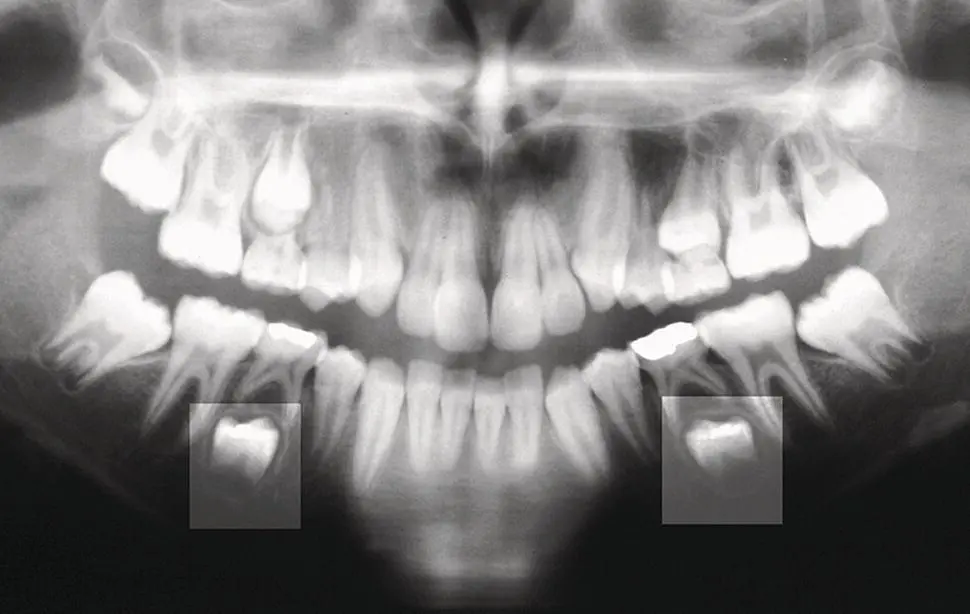
Fig. 1.6 Late‐developing second mandibular premolars with retained ( not over‐retained) deciduous second molars in a child with a dental age of 11–12 years. The contrast and brightness of this poorly contrasted picture have been adjusted in the relevant areas to clearly show the stage of development of these tooth buds.
In summary, there are four different parameters that can explain the existence of certain deciduous teeth that are inconsistent with the chronological age of the patient. Each of these parameters has clinical repercussions and labelling a patient as one particular grouping will in fact dictate the nature of the treatment required:
1 A late‐developing dentition: In this condition the dental age of the patient has developed slower than his chronological age. This is evident radiographically by a lesser root formation in the entire dentition than that which is expected at the chronological age. Typically, this is accompanied clinically by the continued and symmetrical presence of all the deciduous molars and canines on both sides of the jaw. Here, the extraction of deciduous teeth is contraindicated, since the teeth are expected to exfoliate normally when the appropriate dental age is reached.
2 A normally developing dentition with over‐retained deciduous teeth: In this condition and despite the fact that the dental age of the patient correlates with her chronological age, the radiograph demonstrates one or more permanent teeth, which show well‐developed roots but have remained unerupted, i.e. beyond their due eruption time. In most examples of this condition, the anomaly tends to be localized in a single section of the dentition. This may be due to an ectopic siting of the permanent tooth bud, which has stimulated the resorption of only a portion of the root of its deciduous predecessor. Shedding has not occurred due to the continued presence of the remaining part of the root or of another unresorbed root. Indeed, sometimes the condition may be found symmetrically in a single dental arch or even in both arches. In this condition the recommended treatment is extraction of the over‐retained tooth or teeth.
3 A normally developing dentition with single or multiple late‐developing permanent teeth: This condition is commonly found in relation to the maxillary lateral incisor and the mandibular second premolar teeth. Normal shedding of the tooth is expected to occur when the root of the permanent tooth reaches two‐thirds to three‐quarters of its expected length. Accordingly, extraction of the deciduous predecessor is to be avoided.
4 A combination of the above: Sometimes one may see features of all of these three alternatives in a single dentition. In such a case the recommended treatment would need to be multiple and selective, each condition treated in its appropriate way.
The importance of a careful diagnosis and differentiation of the above conditions cannot be over‐emphasized. All the aspects of planning and timing of treatment of the patient with impacted teeth depend entirely on a correct diagnosis.
When is a tooth considered to be impacted?
Based on the principles set out by Grøn [13], it has been widely accepted that, under normal circumstances, a tooth erupts with a developing root and with approximately three‐quarters of its final root length. Typically, when they erupt the mandibular central incisors and first molars will have marginally less root development, whereas the mandibular canines and second molars will demonstrate slightly more root development. This is now generally accepted as a diagnostic baseline from which to evaluate the eruption of teeth in general.
Thus, where an erupted tooth shows less root development ( Figure 1.7), it would be appropriate to label it as prematurely erupted. (This will usually be the consequence of the early loss of a deciduous tooth, particularly where extraction was dictated by the presence of periapical pathology, typically due to untreated caries.)
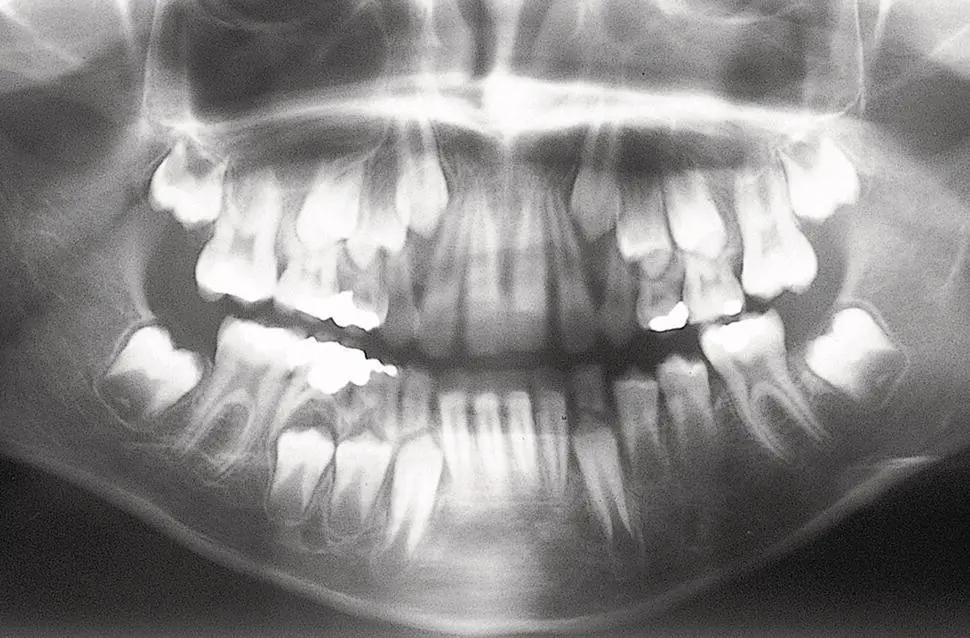
Fig. 1.7 The left mandibular premolars are prematurely erupted, with insufficient root development, due to premature extraction in a caries‐prone dentition.
Conversely, where an unerupted tooth exhibits a more completely developed root, then the eruption process of this tooth must be presumed to have been impeded. (This may have been caused by any one of several aetiological possibilities, such as a failure of resorption of the roots of a deciduous tooth, or an abnormal eruptive path, the presence of a supernumerary tooth, or dental crowding, perhaps a much‐enlarged dental follicle/dentigerous cyst, or indeed any other forms of soft tissue pathology or disturbance in the eruption mechanism of the tooth.) One should not overlook the possibility that the cause of the non‐eruption may also be a thickened post‐extraction or post‐trauma repair of the mucosa.
Читать дальше
